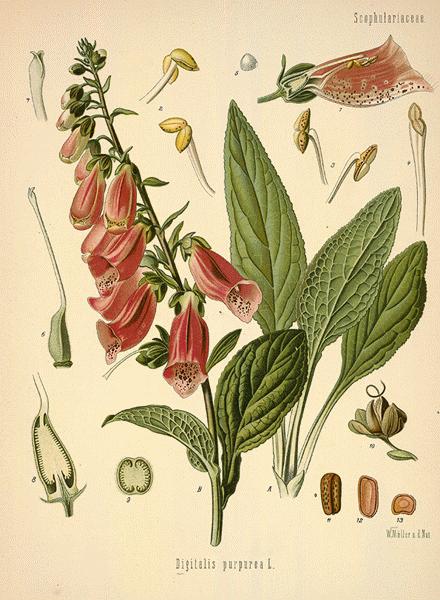Translate
Search This Blog
Tuesday 9 December 2014
Sunday 7 December 2014
Saturday 6 December 2014
Friday 28 November 2014
Sunday 23 November 2014
aldawaa: 5. Tea Leaves
aldawaa: 5. Tea Leaves: Bot. origin: the dried leaves of Thea sinensis Linn. F: Theaceae Active constituent: 1. Alkaloids (M...
Wednesday 12 November 2014
4. Hyoscyamus Leaves
Bot. origin:
the dried leaves and flowering top of Hyoscyamus niger linn .
F: Solanceae
Active constituent:
1. Alkaloids:
a. hyoscyamine
b. scopolamine
Key
element (microscopically examination):
Tuesday 11 November 2014
2. Digitalis leaf
Bot.origin: The
dried leaves of Digitalis purprea or Digitalis lanata
F:
Scrophulariaceae
Digitalis
purpurea Digitalis lanata


Active
constituent: Cardiac glycosides
Key element
(microscopically examination):
Thursday 30 October 2014
Cephalosporin Antibiotics
Cephalosporins are the most frequently prescribed class of
antibiotics. They are structurally and pharmacologically related to the
penicillins. Like the penicillins, cephalosporins have a beta-lactam ring
structure that interferes with synthesis of the bacterial cell wall and so are
bactericidal (which means that they kill bacteria).
Aminoglycosides
In 1943, Selman Waksman, together with his co-workers,
discovered that a fungus Streptomyces griseus produced an antibiotic
substance which they named "streptomycin." Selman Waksman was awarded
the Nobel Prize in Physiology or Medicine in 1952 for his discovery of
streptomycin.
Macrolides
The macrolide antibiotics are derived from Streptomyces
bacteria, and got their name because they all have a macrocyclic lactone
chemical structure. The macrolides are bacteriostatic, binding with bacterial
ribosomes to inhibit protein synthesis. Erythromycin, the prototype of this
class, has a spectrum and use similar to penicillin. Newer members of the
group, azithromycin and clarithyromycin, are particularly useful for their high
level of lung penetration. Macrolide antibiotics are used to treat respiratory
tract infections (such as pharyngitis, sinusitis, and bronchitis), genital,
gastrointestinal tract, and skin infections.
Tetracyclines
Tetracyclines got their name because they share a chemical
structure that has four rings. They are derived from a species of Streptomyces
bacteria. Tetracycline antibiotics are broad-spectrum bacteriostatic agents,
which inhibit bacterial protein synthesis. Tetracyclines may be effective
against a wide variety of microorganisms, including rickettsia and amebic
parasites.
Fluoroquinoloness
Fluoroquinolones (fluoridated quinolones) are the newest
class of antibiotics. Their generic name often contains the root
"floxacin". They are synthetic antibiotics, and not derived from
bacteria. Fluoroquinolones belong to the family of antibiotics called
quinolones. The older quinolones are not well absorbed and are used to treat
mostly urinary tract infections. The newer fluoroquinolones are broad-spectrum
bacteriocidal drugs that are chemically unrelated to the penicillins or the
cephalosporins. Because of their excellent absorption fluoroquinolones can be
administered not only by intravenous but orally as well.
Cephalosporins
Cephalosporins have a mechanism of action identical to that
of the penicillins. However, the basic chemical structure of the penicillins
and cephalosporins differs in other respects, resulting in some difference in the
spectrum of antibacterial activity. Like the penicillins, cephalosporins have a
beta-lactam ring structure that interferes with synthesis of the bacterial cell
wall and so are bactericidal. Cephalosporins are derived from cephalosporin C
which is produced from Cephalosporium acremonium.
Subscribe to:
Posts (Atom)








.jpg)





























